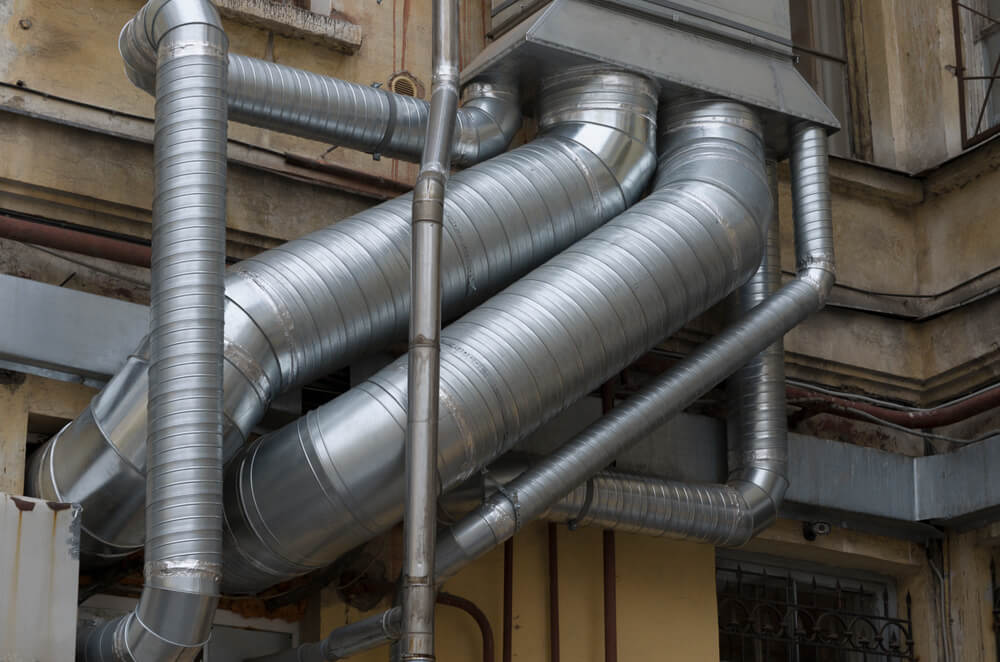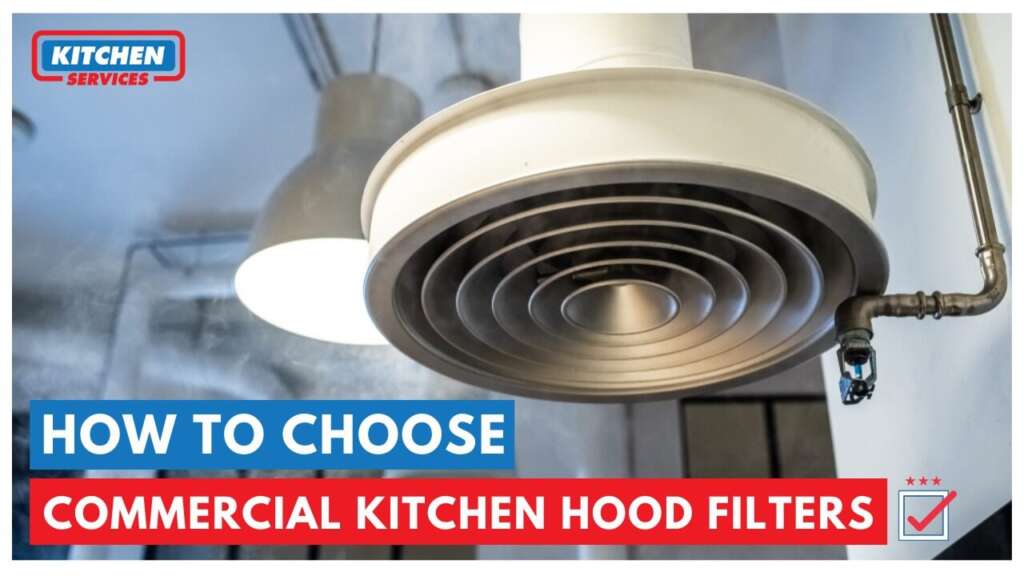Before choosing the perfect commercial kitchen hood filters for your commercial kitchen you must know the usage and advantage of these hood filters. So, basically, hood filters are actually installed over your commercial kitchen’s stoves and are designed in such a way that they tend to trap and remove any kind of smoke, grease, and other debris to block them from getting into your ventilation system.
In case these kitchen hood filters are not installed in your commercial kitchen hood all sorts of grease, particulate matter in smoke, and other types of debris would build up in all air ducts and could be the reason for the fire. Kitchen hood filters are very essential for your homes and commercial kitchens. In case you intend to meet the International Fire Code and National Fire Protection Association regulations, all of the domestic and commercial kitchens must have hood filters installed in them. These organizations state that the importance of having hood filters is to improve the kitchen’s air quality, it also protects the ventilation system and helps in preventing kitchen fires.
Benefits of Commercial Kitchen Hood Filters
Kitchen hood filters provide a lot of benefits. They help in preventing kitchen grease fires, trap grease, and smoke and avoid them from polluting the entire ecosystem. These hood filters also help in keeping the air ducts, kitchen exhausts, and the entire HVAC system cleaner and running more effectively. A lot of people do not really realize grease, smoke and kitchen exhaust effluent all travel on vapors. If they are not captured by the hood filters for commercial kitchens and your home kitchens, they may cause some serious problems. Homes, hospitals, warehouses, and industrial kitchens should make sure to have hood filters for safety and to improve indoor air quality.
Different Materials Used in Commercial Kitchen Hood Filters

You must know that the standard hood filters are offered in three different materials. These materials are
- Aluminum
- galvanized steel
- stainless steel
There are many factors that you need to consider at the time you are deciding what material is the best which will suit your commercial or residential kitchen’s requirements. Two out of these factors would be how the hood filter will look with the interior of your kitchen and how high is the volume of activity regularly taking place in the kitchen. Basically, aluminum hood filters are comparatively shiny and appealing, but the backdrop is that they can be easily damaged and need to be replaced quite often. Whereas galvanized steel hood filters are sturdy but boring and these are not visually pleasing in look. At the same time, stainless steel hood filters are strong and attractive as well but they cost more than the other two types. So, out of these three types, it is up to the user and its requirement that what type they would select for their home or commercial kitchen.
Disposable Hood Filters
Some people also use disposable grease filters in their kitchen hood. These filters are very easy to install and can be installed in no time, they can also catch as much as 98% of lard particles and keep them out of your kitchen hood. They also do not need a lot of cleaning or maintenance from any specialist and can be thrown out or replaced easily when they get dirty. They are actually made of wool, so disposable hood filters are fire retardant and completely recyclable, and eco-friendly. They are used in commercial kitchens in the whole world. Also, if they are used properly, they meet the National Fire Protection Association safety requirements as well.
Size has to be Accurate
Among all other factors, size is also one of the important factors that you need to consider while selecting the perfect kitchen hood for your kitchen. Following are the factors that affect the size of your kitchen hood filters
- Size of your kitchen hood filters depends on the size of your kitchen where it has to be installed.
- The size of the stove with which it will be installed.
- The type and quantity of food that is being prepared in the commercial kitchen.
- The frequency with which food is prepared in the kitchen.
All these factors should be considered while you are deciding on the right size hood filter. When you are ordering a hood vent, the common industry way is to state its vertical dimensions first, as well as its horizontal dimensions.
How to Attach the Hood Filters properly

You can attach your hood filters to the hood above the stove in two different ways. You can either screw them or weld them with the help of stumps. If the hood is being welded in place, it will need a frame that can hold it together with the help of bolts and individual baffles. All the hood filters that are installed in this way tend to be comparatively more flexible, but they also tend to lose with the passing time. Whereas the hood filters are welded into their place using baffles that are constructed from a piece of metal. In this way, they can make the hood filter stiffer as well as durable. Even though the heavy-duty materials that are used to weld the hood filter in place would cost more, welding it in place holds it steady for a much longer period of time.
How To Clean Commercial Kitchen Hood Filters?
It is really very important for you to make sure that the commercial kitchen hood filter is frequently cleaned and maintained properly. All of your commercial kitchen’s hood filters see a lot of activity that is going on in your commercial kitchen. Dirty hood filters will make your kitchen unsafe in many terms. It can be a serious fire hazard, they can cause the kitchen to have exceptionally smoky air and excessive heat and strain on the exhaust system that leads to severely poor air quality. You should always keep your commercial kitchen hood filters clean in order to keep the hood filter clean and properly maintained and to make it work more efficiently, reduce utility costs, and extend its life.
Following is the proper way that lets you clean the hood filter properly.
- You can wash your hood filters by using soft sponges and warm water with soap in order to remove the grease and dirt.
- You should never use tough chemicals in the hood filter cleaning process, as they can cause decay of the metal used in the making of hood filters.
- Another option for faster, easier cleaning of the hood filter is to put the parts into the dishwasher and get it cleaned in a proper way and quickly.
- Soak Tank can also be one of the options. Investing in a soak tank is another option that cuts out the time and labour involved with manual cleaning. Simply fill up the tank with water, then add non-corrosive and metal-safe cleaner, and let the filters soak overnight. The next day, take the filters out, rinse, and they are ready to use
To ensure the hood filter is working properly, maintenance service should be performed on it at regularly scheduled intervals several times each year by a trained professional.
What are the different types of kitchen hood filters?
The three most common types are baffle, mesh, and charcoal filters. Each functions slightly differently, but they’re all made to improve air quality.
What is the best filter for a range hood?
Stainless steel baffle filters are the most efficient and cost-effective choice for your range hood filters.
How often do you need to change the filter in a kitchen hood?
For optimum performance of your rangehood, mesh filters should be cleaned every few weeks/months and replaced every 1-2 years (depending on usage). Carbon filters, on the other hand, need to be replaced every 3-4 months (or every 120 cooking hours).

